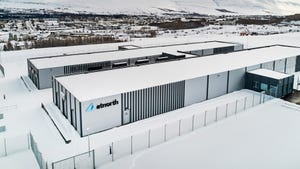CenturyLink Acquires Cloud DR Provider DataGardens
Deal gives cloud provider fast on-prem-to-cloud DR technology and more data migration capabilities
December 8, 2014

CenturyLink has acquired Disaster Recovery-as-a-Service provider DataGardens. Building on an existing relationship, the acquisition gives CenturyLink a proven, fast cloud DR service it can offer its customers and technology that enhances data migration capabilities.
DataGardens allows a private data center to failover to public cloud in just a few minutes, creating an exact replica, DataGardens CEO Geoff Hayward said. The company offers multiple deployment options and “protection groups” that ensure that a pool of servers stays consistent.
Acquiring forward-looking technology firms has been an important part of CenturyLink's strategy. Its acquisitions have turned the telecom into a top cloud competitor.
The cloud journey began with the acquisition of Savvis and was later complemented by acquisitions of Platform-as-a-Service AppFog and Infrastructure-as-a-Service provider Tier 3, forming the foundation of its cloud. Tier 3 has enhanced the company’s “self service” cloud offerings, and DataGardens enhances it further with DR, and eventually more cloud migration capabilities.
A number of organizations turning to DR in the cloud is growing, according to Forrester Research. Cloud DR is advancing in terms of capabilities and suitability, while traditional disaster recovery can be complicated to set up, expensive, and falls outside of the expertise of many companies.
DataGardens' technology and ease of use attracted CenturyLink. “We saw our customers using the DataGardens tool and replicating workloads from client data center to our cloud platform for DR-as-a-Service,” said Jonathan King, vice president of cloud strategy and business development at CenturyLink. “We also saw cloud-to-cloud recovery scenarios. This is a core platform attribute that we feel needs to be built in.”
DataGardens has already integrated with not only CenturyLink’s cloud, but its legacy cloud environments acquired through Savvis.“There’s already a good base of integration, but we are going to be spending the year to make the user experience that much tighter,” said King.
The disaster recovery capabilities made the deal attractive, but CenturyLink is also getting talented technologists and software capabilities that extend beyond, including cloud-to-cloud migration.
DataGardens will be attractive to small and mid-size companies, and departments or application-specific enterprise workloads in need of a DR solution. It enables customers to share DR across a large base in a multi-tenant setting to solve the cost issue. The price point is comparable to cloud backup, said Hayward.
One potential cloud DR deployment model is where both physical and virtual resources are mirrored to a recovery group in the CenturyLink cloud. (Source: CenturyLink)
“We see a lot of demand in the market for this offering because things are becoming more distributed and critical as systems grow,” said King.
“It takes things forward,” said Hayward. Traditional DR is "something that rarely gets implemented, or they use something like tape with awful recovery times.”
In addition to acquiring and developing technological capabilities, CenturyLink has been building out its infrastructure in support of its cloud services, announcing several new data centers this year. The company recently committed to getting Uptime Institute’s Management and Operations Stamp of Approval across its entire footprint (close to 60 data centers).
It has achieved Uptime's Tier III certification in Minnesota and Toronto for Design and Constructed Facility.
About the Author
You May Also Like



.jpg?width=300&auto=webp&quality=80&disable=upscale)



